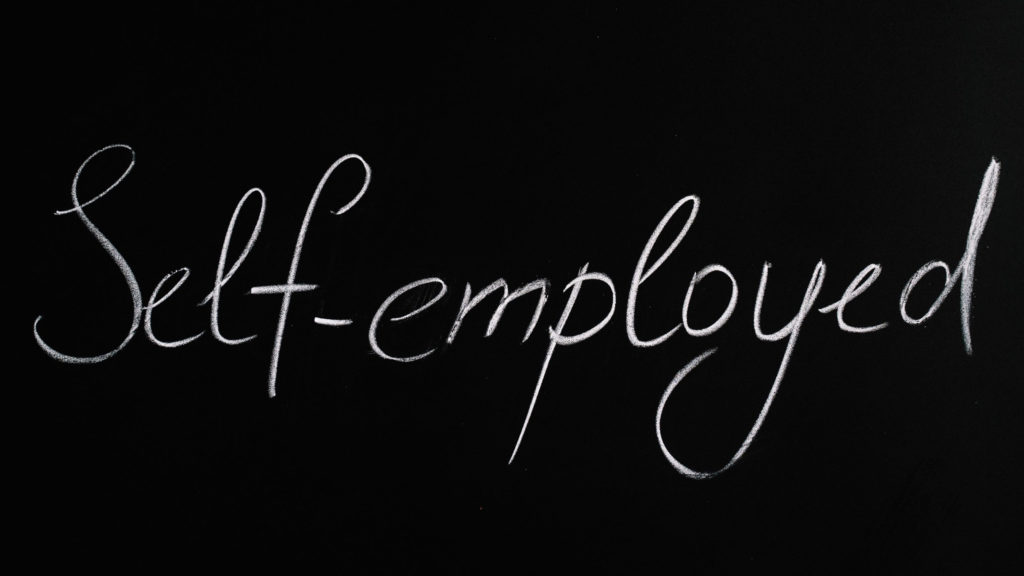From reading the title of this article, you might be wondering what exactly is a Solo 401k? If you’ve never heard the term before, you’re not alone! The majority of investors who come to Nabers Group had never heard of a Solo 401k plan. If you’re looking to save on taxes, and invest with freedom – then you need to know about a Solo 401k. You might not know it yet, but the freedom of investing your retirement funds is incredibly rewarding. Say goodbye to a vanilla basket of mutual funds growing at a snail’s pace when you can invest in alternative assets like real estate, crowdfunding, and Bitcoin. Plus, you can save a bundle in taxes. Typical IRAs let you put away about $6,000 per year. With a Solo 401k, you can tax shelter up to $60,000 (or more) every single year.
What is a Solo 401k?
Simply put – a Solo 401k is a retirement plan designed for solopreneurs, independent contractors, freelancers, and small business owners. A Solo 401k is also known as an individual 401k, Uni-K, Solo K, or even a one-participant retirement plan. That’s because there’s usually just one person in the plan (you!). If your spouse works in your small business with you, they can participate (put money) in your Solo 401k too.
Traditional 401k plans are set up by companies so their employees can save for retirement. A Solo 401k works similarly, but the structure of the 401k is made to be the perfect size for your small business. If you’re a freelancer, independent contractor, or running an S-corp and paying yourself a W-2 wage, you are eligible. You play multiple roles in your small business. You are both employer and employee. In essence, this lets you contribute way more than any other retirement plan. Contributions are tax-deductible or Roth (or both). The amount of money you can contribute (tax deductible or Roth) to a Solo 401k is directly tied to your self employment business earnings.
Solo 401ks are an incredible tool to save on taxes. But they also let you invest in what you want and plan for a financially sound retirement. A Solo 401k is unique in that you control the assets directly. That means you decide where to invest, and how much. Because you’re in control, planning for retirement your way allows you to change your investing goals as often as needed. Maybe one year you focus heavily on pretax (tax-deductible) contributions and investing in real estate. The following year might be big for Roth contributions and bitcoin. With a Solo 401k, you’re in control of your money.
Who Qualifies For A Solo 401k?
In the digital era, the number of entrepreneurs and business owners who qualify for a Solo 401k grows every day. Fortunately, qualifying for a plan is simple. You need two things:
- Presence of self-employment business activity
- Absence of W-2 employees in that business (other than you and your spouse)
Presence of self-employment business activity means you are running your own small business. You can have a Solo 401k even if you haven’t yet made money with your small business. But, the power of the Solo 401k really kicks in when your business is earning revenue. This allows you to put away the maximum amount in contributions and save big on taxes.
Almost any business structure qualifies, including sole proprietorship, 1099 contractors, LLC, S-corp, or C-corp.
Solo 401k plan owners include CPAs, attorneys, financial advisors, real estate agents, Uber drivers, Amazon resellers, photographers, Instagram influencers, digital marketers, writers, consultants, care providers and more! If you operate a small business full-time and are generating revenue, you must consider a Solo 401k to save on taxes and maximize your retirement savings. And, if your small business is more of a “side hustle”, you still qualify for a Solo 401k. In fact, you can even have a regular full-time job and connect your Solo 401k to a side business. Contributing to multiple retirement plans is allowed, but you cannot exceed the contributions limits for a given year. Nabers Group provides you with plenty of tools, like a contribution calculator, to ensure you get the most out of your tax savings, but don’t accidentally over contribute.
What are the Benefits of A Solo 401k?
If you’re interested in high contribution limits, unlimited investment possibilities, and tax-free loans, a Solo 401k may be right for you. In fact, you can utilize the Solo 401k plan differently every year depending on your goals for that particular fiscal year.
Solo 401k plans have the highest contribution limits of any retirement plan. The more your business earns (and pays you), the more you can contribute. Contributions can be pretax (tax-deductible) or Roth, depending on your retirement goals. The Nabers Group Solo 401k was designed to allow you to invest in anything you want. Investment options include stocks, bonds, funds, real estate, tax liens, private placements, pre-IPO offerings, venture capital, bitcoin, cryptocurrency, angel investing, and more. Because you’re in charge of your own plan (no more custodians slowing you down), you can invest where and when you want.
Additionally, a Solo 401k includes a tax-free loan. You can borrow 50% of your account value, up to $50,000. The loan is not considered income and you have 5 years to pay your 401k back. Any and all interest earned on your loan goes right back into your plan. Once you take a loan (our team will help make this happen), you can use loan funds for any purpose.
How Much Can I Contribute in 2021?
Solo 401ks have the highest contribution limits of any retirement plan. For 2021, you can contribute up to $58,000. Contributions are pretax (tax-deductible) or Roth. If you’re age 50 or older, you can contribute up to $64,500. Contribution amounts are directly tied to your business earnings. The more you earn and pay yourself, the more you can contribute. A Nabers Group Solo 401k plan also includes the ability to make voluntary after-tax contributions. This strategy is quickly gaining popularity as a way to “backdoor” even more money into a Roth 401k or Roth IRA.
It’s important to get your contribution calculations right. In addition to our contribution calculator tools, having a skilled tax preparer or CPA is invaluable. In essence, there are two main types of contributions:
- Employee salary deferrals: These can be up to 100% of your compensation. Employee deferral contributions max out at $19,500 per year (or $26,000 if you are age 50 or older). Salary deferral contributions and can be pre-tax or Roth, or a mix of both
- Employer profit-sharing contributions: Contribute 20-25% of net profits, depending on your business structure. Employer profit sharing contributions are pre-tax only.
The total amount you can contribute per person, per year is $58,000 or $64,500 if you are age 50 or older. Does your spouse work in your business with you and get paid from your business? If so, they are eligible to contribute to your company retirement plan. This effectively doubles the amount of money you can put into a Solo 401k each year. Depending on your earnings, you can contribute up to $129,000 – imagine the tax savings!
Solo 401k Contribution Deadline
There are several important dates to remember when it comes to making Solo 401k contributions. Making contributions on-time ensures you get the full tax deduction for the money you contribute. Typically, you must deposit contributions by the time you file taxes for your small business. Fortunately, if you file an extension for your business taxes, you get an extension to make contributions too!
Check out important contribution deadlines below:
- Sole Proprietorship: April 15th (or October 15th if you filed extension)
- Single member LLC: April 15th (or October 15th if you filed an extension)
- C-corp: April 15th (or October 15th if you filed an extension)
- LLC (taxed as a partnership or S-corp): March 15th (September 15th if you filed an extension)
- S-corp: March 15th (September 15th if you filed an extension)
December 31st is another important date to remember. This is when you’ll “formally elect” contributions to your Solo 401k plan. As a small business owner, you might not close your books until January. That makes it challenging to have all your contributions done and deposited by December 31st. Formally electing your contributions solves this issue. When you formally elect contributions, you’re making a note what you plan to contribute for that tax year, even if you don’t actually deposit contributions until later.
Solo 401k vs SEP IRA

If you own a small business, you’ve probably heard of a SEP IRA where a Solo 401k might be new to you. By far, this is the most attractive structure for small business owners who do not plan on hiring full time employees. Both the SEP IRA and Solo 401k have high contribution limits ($58,000 in 2021). But, the types of contributions you make to a Solo 401k actually allow you to contribute more aggressively. SEP IRAs only allow employer profit-sharing contributions, limited to 25% of your business earnings. You can contribute up to 100% of your net compensation for the first $19,500 which can result in a massive tax deduction. SEP IRAs do not include a catch-up contribution for participants over age 50 (and Solo 401ks do!).
Apart from contributions, only a Solo 401k allows the tax-free participant loan of up to $50,000. Loan funds can be used for any purpose, including paying off bills, or even as a cash infusion in your business. Additionally, SEP IRA plans are legally bound to a custodian. This may limit your investment options as most custodians do not support alternative assets. Therefore, real estate, bitcoin, private placements, VC and angel investing, gold & silver and more are usually only allowed in a Solo 401k and not a SEP IRA. SEP IRAs do not allow Roth contributions, but a Solo 401k does. This can help you grow your wealth tax-free.
The Roth Solo 401k
Contributing to and investing with a Roth 401k is an incredible wealth multiplier because your profits grow tax-free. Every Solo 401k by Nabers Group automatically includes both pretax and Roth 401k capabilities in one plan. No extra work, no extra cost. You can fund your Roth Solo 401k with rollovers or contributions. Roll in funds from other Roth 401k, Roth 403b or Roth 457 plans. Unfortunately, you cannot roll in a Roth IRA to a Roth 401k. However, you can grow your Roth 401k funds by making Roth 401k contributions.
Contribute up to $19,500 each year in tax-free Roth 401k funds. If you are age 50 or older, contribute up to $26,000 in Roth 401k funds. You can use a Roth 401k to invest in any asset including real estate, bitcoin, stocks & bonds, gold & silver, private placements, and more.
Nabers Group Solo 401k plans allow for in-plan Roth conversions and mega backdoor Roth strategies. If growing funds tax-free in a Roth structure is your goal, the Roth Solo 401k can help you get there.
How to Set Up A Solo 401K
Setting up a Solo 401k plan is quick and painless. Complete our online application in 5 minutes or less. We’ll gather basic information about your and your business so we can prepare a Solo 401k just for you. Our team will review your application for completeness and then we’ll get to work. Part of your setup includes our experts obtaining a new tax ID number (EIN) specifically for your Solo 401k. This is a new EIN/tax ID number, separate from your business. The Nabers Group expert team will have your plan documents in 2-4 hours.
Once you have plan documents in hand, we’ll walk you through opening bank accounts, brokerage accounts, and crypto exchange accounts so you can start investing. We’ll guide you through initiating a rollover, making a contribution, and even getting started with your first few investments. Anytime you have questions, lean on our expert team or use one of our many avenues to get support. Nabers Group clients have access to online chat, private social network, ongoing trainings, weekly Q&A sessions, and more.
Take your retirement future into your control. You worked hard for your money, and you deserve to control where it’s invested and grow as much as you want. Save big on taxes and invest with freedom using a Solo 401k. Your financial freedom is waiting.




